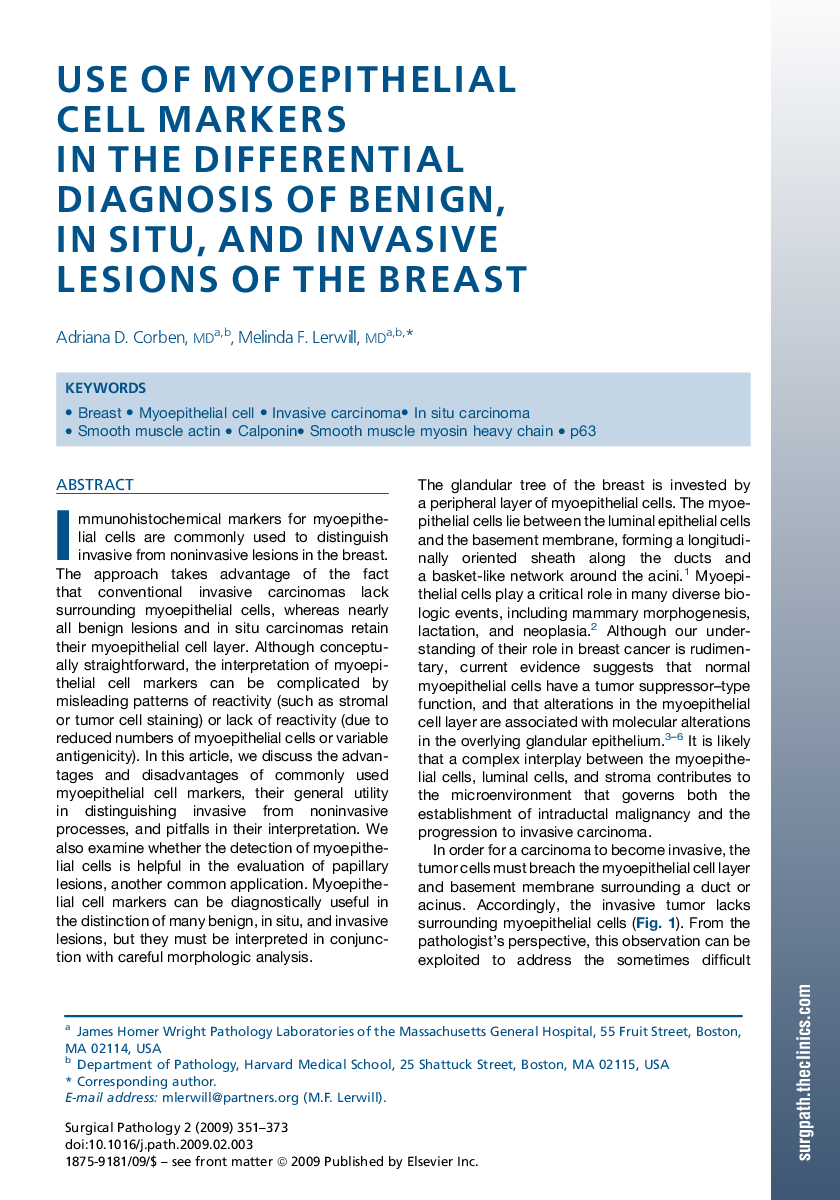| Article ID | Journal | Published Year | Pages | File Type |
|---|---|---|---|---|
| 3334636 | Surgical Pathology Clinics | 2009 | 23 Pages |
Abstract
Immunohistochemical markers for myoepithelial cells are commonly used to distinguish invasive from noninvasive lesions in the breast. The approach takes advantage of the fact that conventional invasive carcinomas lack surrounding myoepithelial cells, whereas nearly all benign lesions and in situ carcinomas retain their myoepithelial cell layer. Although conceptually straightforward, the interpretation of myoepithelial cell markers can be complicated by misleading patterns of reactivity (such as stromal or tumor cell staining) or lack of reactivity (due to reduced numbers of myoepithelial cells or variable antigenicity). In this article, we discuss the advantages and disadvantages of commonly used myoepithelial cell markers, their general utility in distinguishing invasive from noninvasive processes, and pitfalls in their interpretation. We also examine whether the detection of myoepithelial cells is helpful in the evaluation of papillary lesions, another common application. Myoepithelial cell markers can be diagnostically useful in the distinction of many benign, in situ, and invasive lesions, but they must be interpreted in conjunction with careful morphologic analysis.
Keywords
Related Topics
Health Sciences
Medicine and Dentistry
Hematology
Authors
Adriana D. MD, Melinda F. MD,
